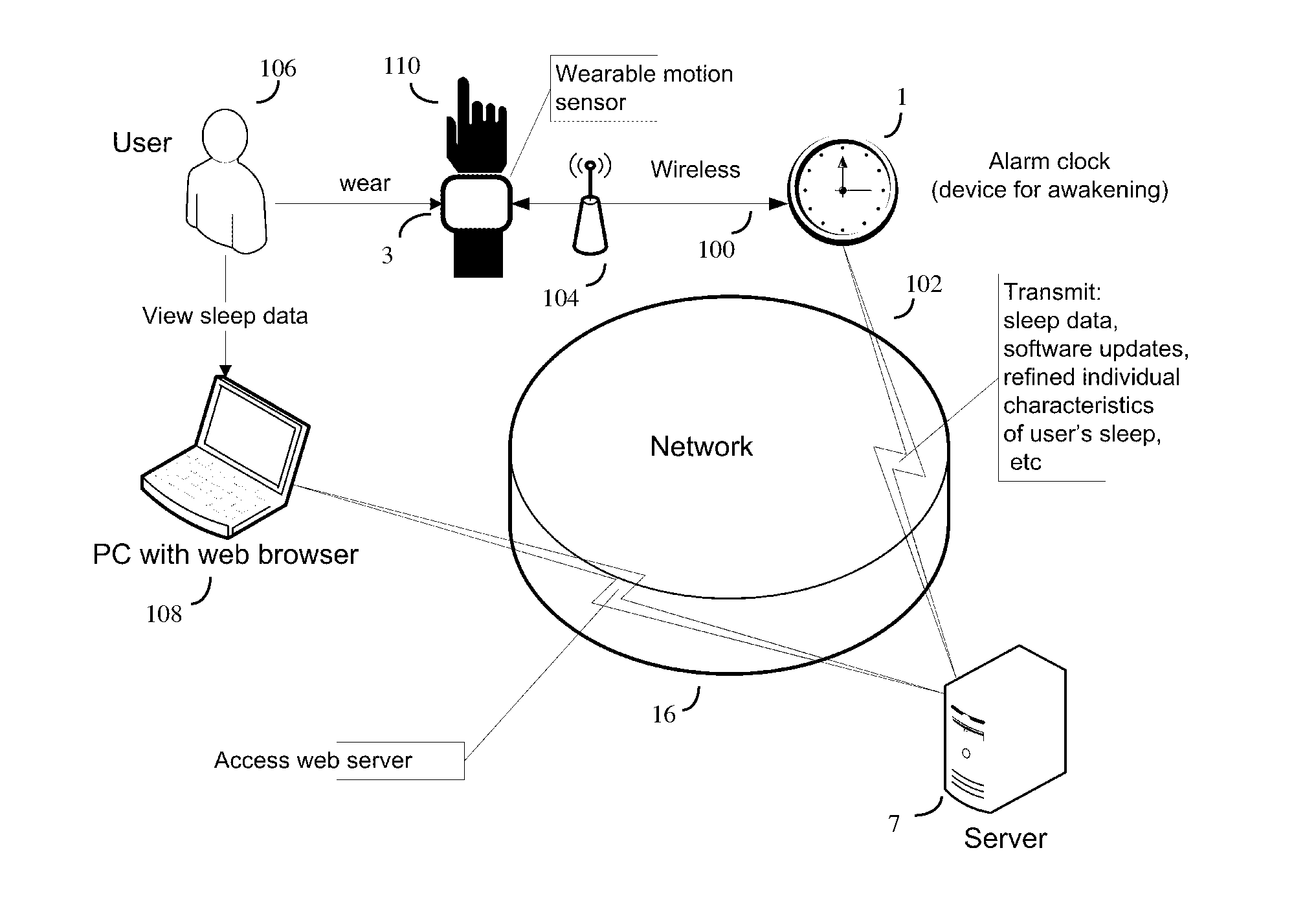Method and system for sleep monitoring, regulation and planning
a technology of sleep monitoring and regulation, applied in the field of medical applications, can solve the problems of waking up from a deep sleep, affecting well-being, and reducing sleep quality, and achieve the effect of accurately predicting rem sleep patterns and accurately determining optimal times to wake up users
- Summary
- Abstract
- Description
- Claims
- Application Information
AI Technical Summary
Benefits of technology
Problems solved by technology
Method used
Image
Examples
example 1
[0109]The user has only used the system for several days, and the system does not yet have enough accurate data on the user's REM phase and non-REM interval duration at the end of sleep. In this example, if the user has set a wake-up interval to the 6:30-7:00 AM interval, and the system has determined that the exit from REM phase occurs at 6:35 AM, then it is obviously better to wake up the user at this moment. This is because there is a probability that the subsequent non-REM interval will be longer that 25 minutes, and the system will be forced to wake up the user at 7:00, which may be a at non-optimal wake-up time. This situation is illustrated in FIG. 11. Here, due to limited data, the duration of the non-REM interval is known to within about 15 minutes accuracy, and the system will conservatively determine that the optimal wake-up moment is 6:35 AM.
example 2
[0110]In this example, the user has used the system for a longer period of time, and the system now has information that the duration of the non-REM interval (i.e. spacing between REM phases) is 15-20 minutes at the end of sleep. The user has again set the wake-up interval 6:30-7:00 AM, and the system has again determined the exit from REM phase will occur at 6:35 AM. Because the system now has more information, the system also knows that the user will enter the next REM phase at 6:55 AM, which is still within the target, wake-up interval. Because the system now has more information, the system can give the user more sleep while still accomplishing the wake during REM phase objective. Thus the system will not wake the user up at the first moment of exiting from REM phase at 6:35 AM, but will instead wait until the moment of entering the next REM phase (closer to 6:55 AM). This will allow the user to benefit from an additional 15-20 minutes of sleep, in contrast to the first example....
example 3
[0148]Here multiple users in multiple locations use their various local devices for awakening, as well as using the user interface in their local device for awakening (or alternatively an alternative means such as a web browser) to enter in their various general objective factors and objective daily factors into the remote server. The various local devices for awakening also transmit additional information, such as the record of user movement during the night obtained from the various movement sensors, which can be used to determine REM sleep stages. Additional information transmitted can include some or all of the various user settings for the local device for awakening—i.e. wake-up time windows, snooze settings (if any), and so on.
[0149]Here the database on the remote server will obtain a relatively large amount of data. When a new user, (preferably the one who at least provides information on global individual factors), joins the system, the search for optimal values of this user...
PUM
 Login to View More
Login to View More Abstract
Description
Claims
Application Information
 Login to View More
Login to View More - R&D
- Intellectual Property
- Life Sciences
- Materials
- Tech Scout
- Unparalleled Data Quality
- Higher Quality Content
- 60% Fewer Hallucinations
Browse by: Latest US Patents, China's latest patents, Technical Efficacy Thesaurus, Application Domain, Technology Topic, Popular Technical Reports.
© 2025 PatSnap. All rights reserved.Legal|Privacy policy|Modern Slavery Act Transparency Statement|Sitemap|About US| Contact US: help@patsnap.com



